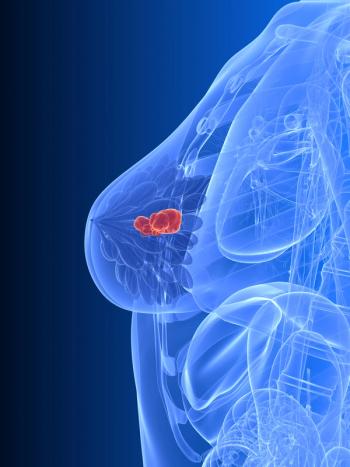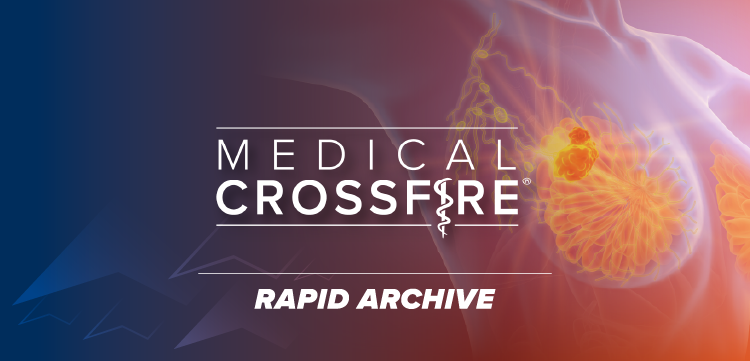
Oncology NEWS International
- Oncology NEWS International Vol 6 No 8
- Volume 6
- Issue 8
Study Finds No Leukemia-Electromagnetic Fields Link
BETHESDA, Md--A multistate, case-control study involving more than 1,200 children has failed to document a link between electromagnetic fields in and around the home and acute lymphoblastic leukemia (ALL), the most common form of cancer in children.
BETHESDA, Md--A multistate, case-control study involving more than 1,200children has failed to document a link between electromagnetic fields inand around the home and acute lymphoblastic leukemia (ALL), the most commonform of cancer in children.
"Our study, overall, shows no evidence of an increased risk ofchildhood ALL at residential magnetic field levels experienced by mostchildren in this country," said lead investigator Martha Linet, MD,of the National Cancer Institute. "The results do not support thehypothesis that children living in homes with high measured levels of magneticfields or high wire code levels have an increased risk."
[Wire code levels are based on power-line thickness, configuration,and distance from the home, and closely correlate with magnetic field levels.]
Dr. Linet and her colleagues at the NCI and the Children's Cancer Group(CCG) described the findings in a briefing at the National Institutes ofHealth. Their full report appeared in the July 3, 1997, issue of the NewEngland Journal of Medicine.
"Some people claim that epidemiological studies are never definitive,"Lawrence J. Fischer, PhD, director of the Institute for Environmental Toxicology,Michigan State University, and chairman of the study's advisory group,said at the briefing. "But this study certainly, in my view, tipsthe scale to indicate that exposure to magnetic fields is not a major,and probably not even a minor, component of cancer causation."
About 1,600 children will die of ALL in 1997, according to the AmericanCancer Society. The issue of whether magnetic fields have contributed tothe rise in ALL that has occurred since 1974 has remained unresolved sincethe first report suggesting a cancer link in 1979.
Last year, in an analysis of more than 500 studies, the National ResearchCouncil (NRC) reported a "weak statistical correlation between childhoodcancer and wire configuration," but the new study suggests that eventhis weak correlation can be explained by problems with study methodology.
The NCI/CCG study was designed specifically to address factors thatmight account for the NRC findings and to overcome a number of shortcomingsnoted in previous studies.
For example, the current study is four times larger than the next-largestUS study; in this study, magnetic field levels were measured inside thehome rather than estimated by examining power lines outside the home; measurementswere not limited to a single residence per child and were made within twoyears of the child's diagnosis instead of many years later; and, finally,the data collectors in the NCI study were blinded as to which childrenhad leukemia and which did not.
The new study enrolled 638 children with ALL who were under 15 yearsof age; 58% were younger than age 5. Another 620 healthy children servedas controls, matched for age, race, and telephone exchange. All the childrenlived in one of nine states: Illinois, Indiana, Iowa, Michigan, Minnesota,New Jersey, Ohio, Pennsylvania, and Wisconsin.
The researchers measured magnetic fields in the children's current andformer homes, including those where their mothers lived during pregnancy.They also assigned wire code levels to the homes.
The exposure measurements consisted of electronic meter readings takenin a child's bedroom every 30 seconds for 24 hours. In addition, 30-second"spot" measurements were made in the bedroom, family room, kitchen,and the room the mother slept in when pregnant with the child.
Dr. Linet acknowledged that even this approach has its limitations."It is not known how well a single, 24-hour measurement taken in achild's bedroom over one day characterizes that child's current magneticfields exposure, much less a child's overall exposure during earlier years,"she said.
Four Levels of Exposure
The children were divided into four groups, based on the level of magneticfields to which they were exposed: below 0.065 µT (microtesla) (44.6%of the 1,241 children with magnetic field measurements); 0.065 to 0.099µT (19.3%); 0.1 to 0.199 µT (23.3%); and 0.2 µT or above(12.3%).
Although the middle two groups each showed a 10% increased risk of ALL,compared with the children with the lowest exposure, and the highest groupshowed a 24% increase, the team said these increases were not statisticallysignificant. Furthermore, there was no dose-response pattern of increasingrisk with increasing exposure.
Wire code classifications were also divided into four groups: undergroundor very low exposure (43.5% of the 804 children classified); ordinary low(28.6%); ordinary high (21.6%); and very high (6.2%).
The ordinary low exposure group had a 7% higher ALL risk than the verylow group, but the ordinary high group had a 1% lower risk than the verylow group, and the very high group had a 12% lower risk. Again, there wasno statistically significant difference.
"This is a strong study; it eliminates problems present in otherstudies," Dr. Fischer said. "The results should be welcomed bypersons who must make decision regarding the mode with which we transmitelectrical power. It should also help scientists turn their attention toresearch that may provide more productive results leading to the cause,treatment, and prevention of this dread disease."
The magnetic fields study is part of a much larger ALL study being conductedby the CCG involving 1,900 cases and 1,900 controls. Researchers are lookingat both genetic and environmental issues, including infections, parentaloccupation and lifestyle, possible medical contributions (x-rays, drugs),and specific exposures (pesticides, radon, solvents). The first of a seriesof reports will be published early next year.
Articles in this issue
over 28 years ago
Two-Step Approach Urged to Avoid High Tech, Wild Deathover 28 years ago
Health Insurance Premiums Tax Proposedover 28 years ago
ODAC Votes Yes on Taxol for Kaposi's Sarcomaover 28 years ago
Five Principles Help Resolve Ethical Dilemmas in Careover 28 years ago
Ovarian Cancer Survivors Form National Coalitionover 28 years ago
Photodynamic Therapy Used in Nonmelanoma Skin Cancerover 28 years ago
Increased Numbers of Nevi Can Predict Risk of Melanomaover 28 years ago
With Genetic Tests, Informed Consent Enters Psychosocial Realmover 28 years ago
Cryoablation May Have Limited Role in Prostate Cancer Treatmentover 28 years ago
Americans Not Convinced of Value of Watchful WaitingNewsletter
Stay up to date on recent advances in the multidisciplinary approach to cancer.





















































































